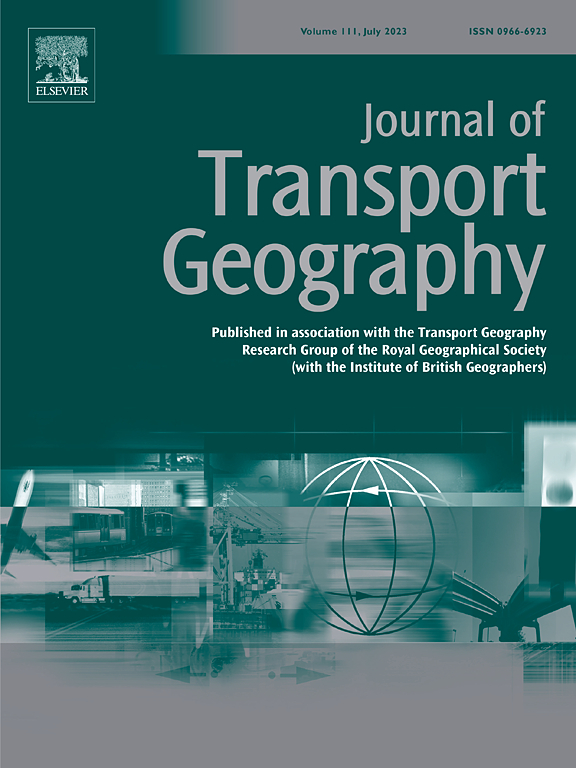空中高速铁路多式联运网络的分层时空优化
IF 6.3
2区 工程技术
Q1 ECONOMICS
引用次数: 0
摘要
空高铁(HSR)多式联运网络的时空协调对于减少排放、改善服务、提高效率和降低成本具有重要意义。本文构建了一个分层优化模型,该模型首先考虑空间范围,利用混合整数线性规划(MILP)模型解决路线分配和频率选择问题,以最小化总环境,运营和乘客成本,基于城市对之间的乘客旅行需求估计。然后,该模型的第二个层次考虑了一个时间范围,以最大限度地提高由此产生的空气和高铁网络之间的连接机会,使用时间窗口通过规定性整数二次规划(PIQP)模型调整频率。对中国大陆40个城市的航空和高铁交通网络的应用表明,该网络的总排放量可以减少22%。对比分析表明,优化乘客成本有利于增加中长途航线的航空旅行,而以排放为重点的方法则鼓励中短途转向高铁。对碳定价的敏感性分析进一步强调了在不需要额外高铁基础设施的情况下,逐步调整价格以激励低排放模式的潜力。本文章由计算机程序翻译,如有差异,请以英文原文为准。
A hierarchical spatial and temporal optimisation of the air-high speed rail intermodal network
Spatial and temporal coordination of air-high speed rail (HSR) intermodal networks is important to reduce emission, improve service, enhance efficiency, and reduce costs in the provision of air-HSR integration. This paper constructs a hierarchical optimisation model that first considers a spatial scope to solve the problem of route allocation and frequency choice which minimises total environmental, operational and passenger cost with a Mixed-Integer Linear Programming (MILP) model, based on a demand estimation for passenger trips between city pairs. Then, the second hierarchical level of the model considers a temporal scope to maximise connection opportunities between the resulting air and HSR networks using time windows to adjust frequencies with a Prescriptive Integer Quadratic Programming (PIQP) model. An application to a network of 40 cities in mainland China with both air and HSR transport service shows that the total emission of the network can be reduced by 22 %. Comparative analyses show that optimising for passenger costs favours increased air travel on medium- and long-haul routes, while an emissions-focused approach encourages a shift toward HSR for short and medium distances. Sensitivity analyses on carbon pricing further highlight the potential of gradual price adjustments to incentivise lower-emission modes without requiring additional HSR infrastructure.
求助全文
通过发布文献求助,成功后即可免费获取论文全文。
去求助
来源期刊

Journal of Transport Geography
Multiple-
CiteScore
11.50
自引率
11.50%
发文量
197
期刊介绍:
A major resurgence has occurred in transport geography in the wake of political and policy changes, huge transport infrastructure projects and responses to urban traffic congestion. The Journal of Transport Geography provides a central focus for developments in this rapidly expanding sub-discipline.
 求助内容:
求助内容: 应助结果提醒方式:
应助结果提醒方式:


